Plextor M5M (256GB) mSATA Review
by Kristian Vättö on April 17, 2013 10:20 AM ESTRandom Read/Write Speed
The four corners of SSD performance are as follows: random read, random write, sequential read and sequential write speed. Random accesses are generally small in size, while sequential accesses tend to be larger and thus we have the four Iometer tests we use in all of our reviews.
Our first test writes 4KB in a completely random pattern over an 8GB space of the drive to simulate the sort of random access that you'd see on an OS drive (even this is more stressful than a normal desktop user would see). I perform three concurrent IOs and run the test for 3 minutes. The results reported are in average MB/s over the entire time. We use both standard pseudo randomly generated data for each write as well as fully random data to show you both the maximum and minimum performance offered by SandForce based drives in these tests. The average performance of SF drives will likely be somewhere in between the two values for each drive you see in the graphs. For an understanding of why this matters, read our original SandForce article.
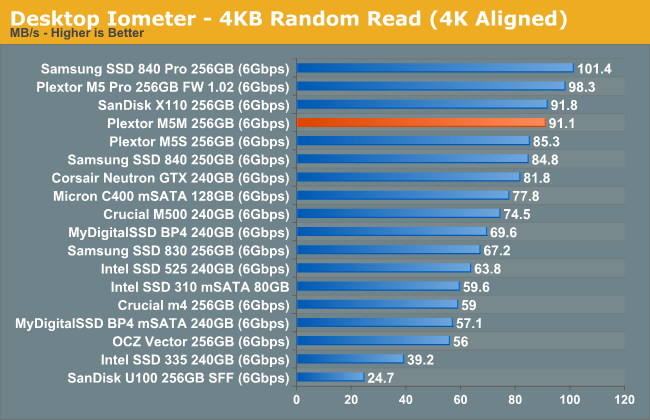
Random read performance is strong and nearly on par with the M5 Pro. However, at queue depth of 3 there is no substantial benefit from the increased parallelism with eight channels, hence the M5M is able to keep up.
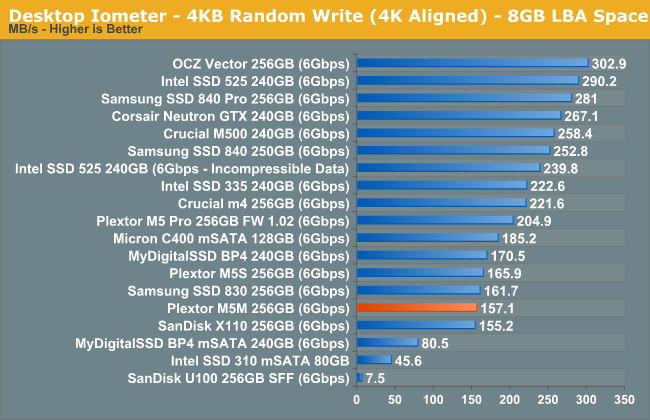
Random write speed at lower queue depths has never been Plextor's biggest advantage and the M5M is no exception. The performance is not terrible but it's behind compared to many of the other today's high-end SSDs. However, at higher queue depths the performance raises to a level similar to other SSDs:
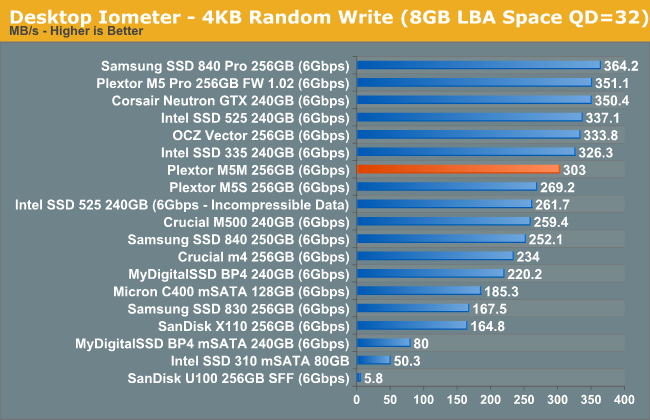
Sequential Read/Write Speed
To measure sequential performance I ran a 1 minute long 128KB sequential test over the entire span of the drive at a queue depth of 1. The results reported are in average MB/s over the entire test length.
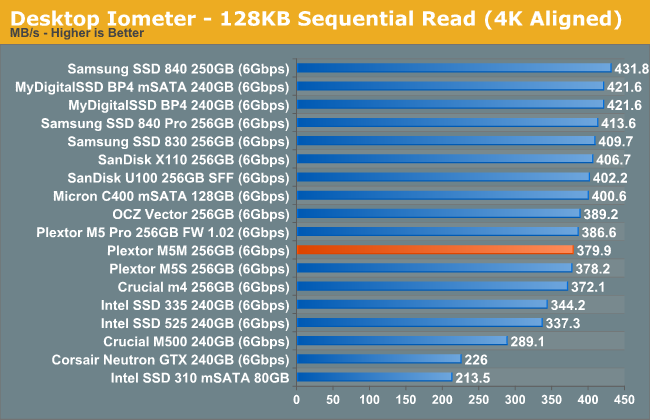
Sequential write speed is slightly lower than what you get with all eight channels populated, but the difference isn't dramatic.
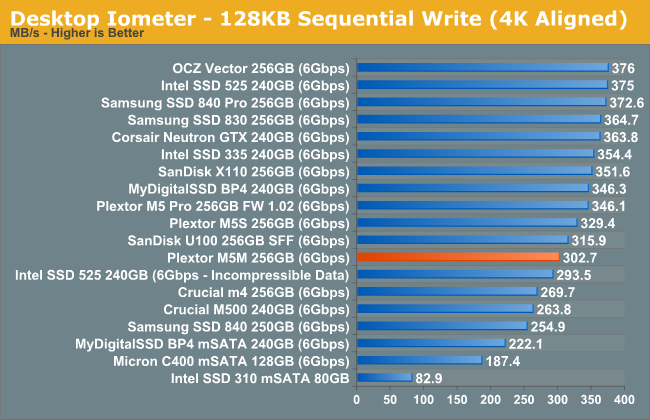
AS-SSD Incompressible Sequential Performance
The AS-SSD sequential benchmark uses incompressible data for all of its transfers. The result is a pretty big reduction in sequential write speed on SandForce based controllers.
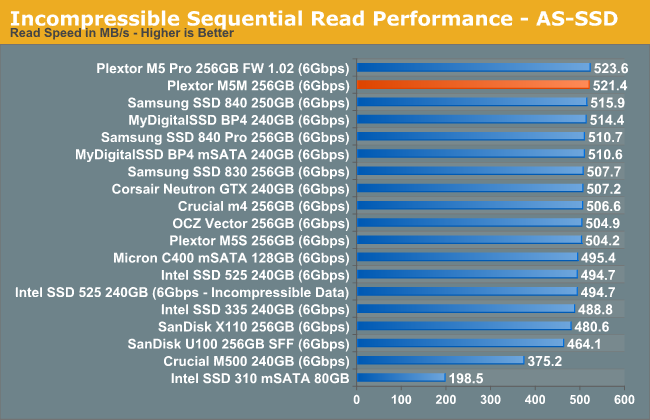
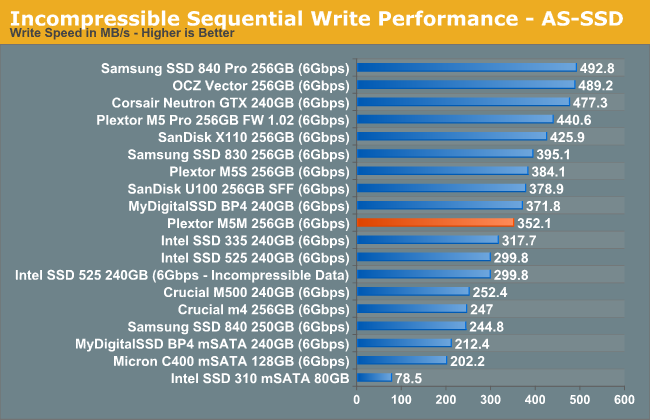










36 Comments
View All Comments
JellyRoll - Thursday, April 18, 2013 - link
Several large enterprise websites have used this methodology for years for numerous types of testing. This method does not give an accurate portrayal of latency performance. It merely gives one second intervals with thousands of IOPS each, which hides the maximum results in among thousands of other I/O.puppies - Wednesday, April 17, 2013 - link
Spelling mistake in the 3rd line. Should be controlled not controller.Great article btw :D.
Kristian Vättö - Thursday, April 18, 2013 - link
Fixed! Thanks for the heads up :-)iwodo - Thursday, April 18, 2013 - link
And we have to wait till Broadwell Chipset before we get SATA Express with ( hopefully ) 16Gbps.abhilashjain30 - Monday, July 29, 2013 - link
You can purchase online from SSD Portal ( http://onlyssd.com/ssd-brand/buy-plextor-ssd )abhilashjain30 - Thursday, September 26, 2013 - link
Recently buy from onlyssd dot com, I got within 2 working days from the order date. Drive working fine....I think in mSATA drive Plextor is better option compare to crucial n more.